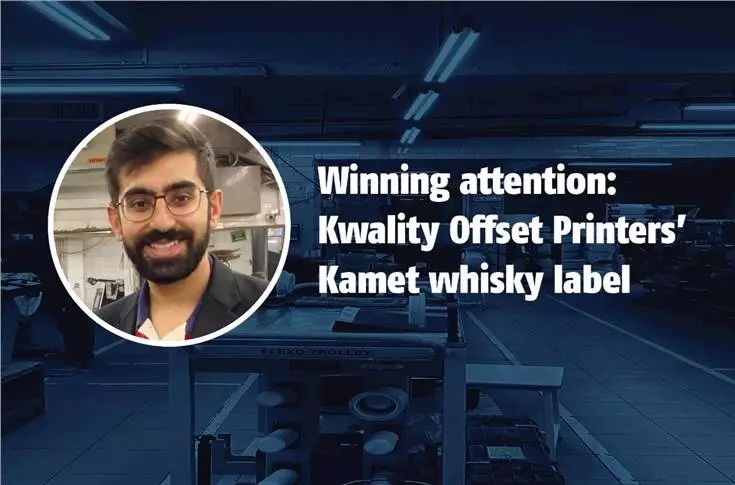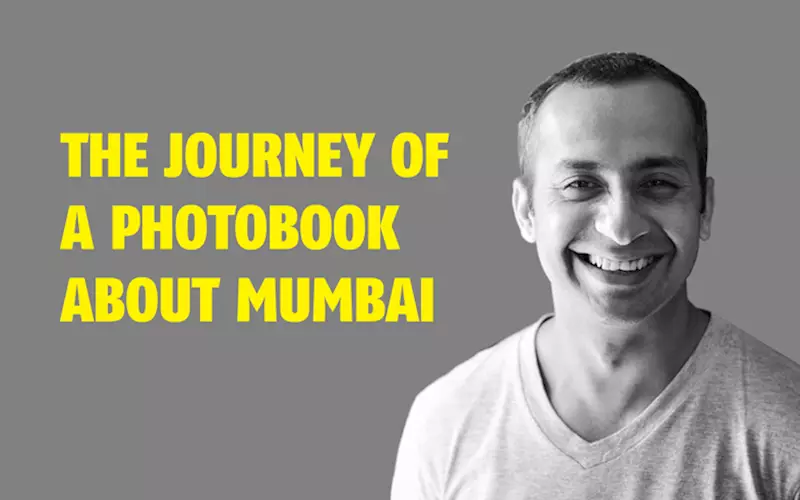The journey of a photobook about Mumbai - The Noel D'Cunha Sunday Column
Ritesh Uttamchandani has published a landmark photobook charting the evolution of Mumbai. The project was 4.5 years/54 months in the making, and looks at how an artist has to grapple with print production during a project.
Read more...
29 Nov 2020 | By Noel D'Cunha
This is the story of a photobook on Mumbai, “the city that doesn’t sleep” and also “the city of dreams”, exploring this dichotomy in India’s urbs primus where a day can easily feel as long as a year! Published in 2018, the book is The Red Cat and Other Stories (7x7-inches, softcover plus gatefolds, 128 pages with an eight-page booklet). The author is the photographer Ritesh Uttamchandani, who captured the photographs on his iPhone over a period of four and a half years (54 months) and self-published the book with the first edition print-run of 1,000 copies (printed at Pragati Offset, Hyderabad).
“It was my 14th year as a photographer, and I had no idea what I was getting into. But it was an unbelievably enlightening, humbling process (not journey),” Uttamchandani remembers.
He says the idea for the book was sown many years ago by a conversation that happened at an office lunch in 2009 — six writers, one bureau chief and Uttamchandani were in this swanky South Bombay restaurant when the chief proclaimed, “I see six books coming out from this table.”
“Apart from this awkward lunch, there were other triggers too,” he adds. “My aunt and uncle were famous Sindhi writers and my mother and sister would often borrow books from their library and read to us. Soft human interest stories, folk tales and sometimes big format Russian graphic novels.”
There is also the added realisation that Uttamchandani’s portfolio as a news photographer was reasonably scattered. “I was just an assignment photographer like many of my colleagues. The usual rut of festivals, disasters, Bollywood and of course, cricket,” he narrates. “In 2014, my dad was unwell and admitted to a hospital by the sea. The adjoining was a place we frequented every weekend when ours was an undivided family. On one afternoon, I made a photo of that place that moved me immensely.”

Photos by Rahul Majumdar
The photograph depicted a fair amount of change in many elements of my childhood — the stone pathway, children feeding birds. Sea Rock hotel was replaced by Land’s End, a bridge on the horizon. And a mammoth crow cutting the square frame diagonally, wings wide open.
This became the genesis for the book. Reviewing is The Red Cat and Other Stories in Better Photography, Tanvi Dhulia writes, “Like many artists and documentarians before him, Ritesh Uttamchandani’s book attempts to capture the spirit of this burgeoning metropolitan. His intention was to create a “narrative that builds a bridge between a folk story from Sindh, my parents’ former home and my relationship with my present home, the city by the bay."
The book also contains images as varied as young men exercising with cinder blocks; two grinning horses rolling their eyes gleefully as they swim; a dog urinating on a pole in the middle of a playing field; cubes of ice sitting in a restaurant urinal; two Ronald McDonald's gazing at a wall marked ‘TV’, among many others.
Dhulia continues: “What first strikes you about The Red Cat and Other Stories is the affection with which it has been crafted. It’s a book that is meant to evoke a sense of home. Every page and every word is meant to be intimate. For instance, the font on the cover of the book is an amalgamation of the handwritings of the photographer’s sisters. It is a labour of love that deserves our attention.”
Self-publishing
So, after putting so much energy, so much heart to the project, why did Uttamchandani decide to self-publish the book? He says he initially began the project hoping for conventional mass production backed by a mammoth publisher. Slowly, however, he came to realise that the field is dominated more by names and connections and less by content and skill.
“I did have other publishers who were keen, but they wanted me to bring money on the table. Some were keen on backing it fully but wanted to price the book at Rs 2,500 upwards and do a book launch at Prithvi Café or some such venue — nothing unconventional for a book shot entirely using the most common camera of today,” he says.
In short, for Uttamchandani the process seemed uninteresting. Plus, as he explains, being a Sindhi, the monetary aspect of a traditional publishing model too was unappealing. “I mean, what is 10-15% for four years of work, he says, adding, “Finally, a conversation with Eanna De Freine, who runs a small independent publishing label called The Velvet Cell, helped me make up my mind. I had asked him for advice on a contract sent to me by a publisher, and he said, in short, stop wasting time with all this legalese and if it is your first book, self publish and enjoy the journey!”

Photos by Rahul Majumdar
The journey
And how was the journey? There were challenges of course, “from what you wish to show, to what you wish to say, to how, and where and how to what grade of paper, what’s size, what font, to what packaging material, to which courier service and even which pen to use to sign the book and given my lousy handwriting, sign where!”
However, for Uttamchandani, the biggest challenge the common notion of a visual book among the Indian readership. He says, the Indian audiences are sadly limited to thinking that the photobook is equal to big giant hardcover furniture embellishment. And so, only the rich or the investment bankers or worse, your friends end up buying it. “And some people think of it as buying methi —only this much for ten rupees? Arrey, put some kadi patta, mirchi upar see, yaar! The author, story, ideas are all secondary, the physical form is of utmost importance and it is kind of counterproductive in the long run. The new trend is that a photobook is an art object. It’s fine for some projects, certainly not for mine, but it leads you to the same overpriced inaccessible spot as the coffee table,” he argues.
So, of course, Uttamchandani’s book is priced at an affordable Rs 1,600, which he sells through his personal website.

Photos by Ritesh Uttamchandani
The book received a good amount of press as well, with reviews in Mint, Hindustan Times, Mumbai Mirror, Hindu, YourStory, PDN, New Indian Express, and A Photo Editor, among others.
“The feedback has been varied largely since the book didn’t just end up with photographers,” he says. “One designer loved the clean design of it and was very curious to know how I chose the fonts. I didn’t choose them. I was helped by my UI designer friend Neha Vaswani. The most interesting bit was this guy who said he liked the picture of the two donkeys in a swimming pool. Those are not donkeys, those are pedigree racehorses, so high stakes you could buy a home for that amount. Once that got cleared, he was able to grasp the irony better. I could write another book based on the feedback since almost all of the orders in Bombay were hand-delivered by me personally.”
But above all, the book is Uttamchandani’s love for the city of Mumbai. In an interview with Tiffinbox, he says, “It’s my love of the city. It’s my love of uh, you know, uh, my country it’s my love for images, but most importantly it’s my love for the generations that have come before us and the kind of things they pass on to us and you know, we’re at a very critical stage as far as images go, you know, we are constantly consuming things which are on the phone or on digital devices.”
He explains what he wanted with the book. “I actually didn’t set out to do an unconventional non-cliché book. I just had a list of things I didn’t want to touch or show — Marine Drive, Gateway of India, Cricket, Bollywood, and such. It is like dealing with a person. If someone sees me smoking, certain other attributes get piled on to the word smoker. I may be none of those, but the word smoker has these strange by default buddies it didn’t ask for. The same is the case with apna sheher. The red cat fable is all about that, seeing the obvious, a little more clearly, that love, happiness and peace are a long drawn out one step forward two or often many steps back process. There are no straight roads to anything,” he concludes.











 See All
See All